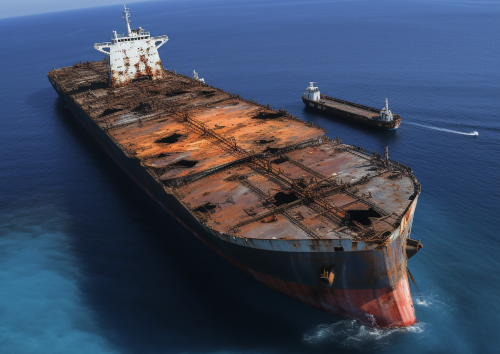
An international team is poised to begin a critical oil transfer operation from a decaying tanker off the coast of war-torn Yemen this week, as announced by a senior United Nations official. The operation, years in the making, aims to prevent a potential massive oil spill in the Red Sea.
The tanker, named SOF Safer, currently holds over 1.1 million barrels of oil. To address the risk posed by the rusting tanker, the United Nations has procured another vessel to replace it, where the oil will be safely transferred. Achim Steiner, administrator of the U.N. development program, confirmed that the salvage team successfully moored the replacement vessel alongside the Safer tanker in the Red Sea, marking the completion of the preparatory phase.
Originally a Japanese-made tanker constructed in the 1970s, SOF Safer was sold to the Yemeni government in the 1980s to store up to 3 million barrels of export oil from Marib, a province in eastern Yemen. However, the vessel has not undergone maintenance for eight years, resulting in compromised structural integrity and the risk of breaking up or exploding due to seawater damage to its engine compartment.
Controlled by the Iranian-backed Houthi rebels, the Safer tanker is located 6 kilometers (3.7 miles) from Yemen’s Red Sea ports of Hodeida and Ras Issa, in an area of strategic significance amidst the ongoing conflict in Yemen, which began in 2014 when the Houthi rebels captured the capital city, Sanaa.
The United Nations, along with various governments and environmental groups, has long warned about the potential consequences of a major oil spill or explosion from the tanker. Such an event could disrupt global shipping through the Bab el-Mandeb and Suez Canal routes, leading to significant damage to the global economy. The U.N. launched a campaign to raise funds for the salvage operation, with a cost of $143 million, which has faced challenges. Despite resorting to crowd funding, approximately $20 million is still required to complete the operation. Criticism has been directed towards the oil and gas industry for not contributing more.
The replacement vessel, named Yemen, has already arrived at Yemen’s coast, and the salvage team has initiated the safe transfer of oil from the Safer tanker. Precautionary measures, including a flotilla of technical and supply vessels, are being implemented to minimize risks during the operation. After the successful oil transfer, the replacement vessel will be connected to an under-sea pipeline to transport oil from the fields.
The U.N. hopes that the Safer tanker will be emptied and towed away to a scrapyard for recycling once the operation is completed.

